Home
The best waterfalls near Veliko Tarnovo (Bulgaria) you must visit!
- Details
- Written by: Gianna Esquivel
- Hits: 5745
Guys, Bulgaria is a gem you should explore at least once! This time we are in its north-central part. To give you a clue about our current location, we are close to the famous Veliko Tarnovo. That’s easy to spot on the map. It’s a town that is totally worth a visit. But this time, we want to talk to you about the beautiful waterfalls that you can see around Veliko Tarnovo. Either if you go directly there or if you are around, keep them in mind.
That’s our case, we are heading to the Bulgarian border city called Vidin. But we don’t have an exact date to reach it so we are going slowly to see more interesting things around. Like waterfalls! We love waterfalls and nature in general so here you have 5 waterfalls near Veliko Tarnovo you must visit!
| Follow PackAndGo.info at: | |
| YouTube | @packandgo. |
| @packandgo.info | |
| X | @packandgoinfo |
| Bluesky | @packandgo.bsky.social |
| @packandgo.info | |
| TikTok | @packandgo.info |
1. Zlaten waterfall (Златен водопад), 65km away
Our first waterfall during this trip was Zlaten. It’s 65 kilometers east of Veliko Tarnovo. The name Zlaten means golden, and it comes from the color of the stones. They are a golden color and you can see small twinkling stones in the river, that look like the precious metal.
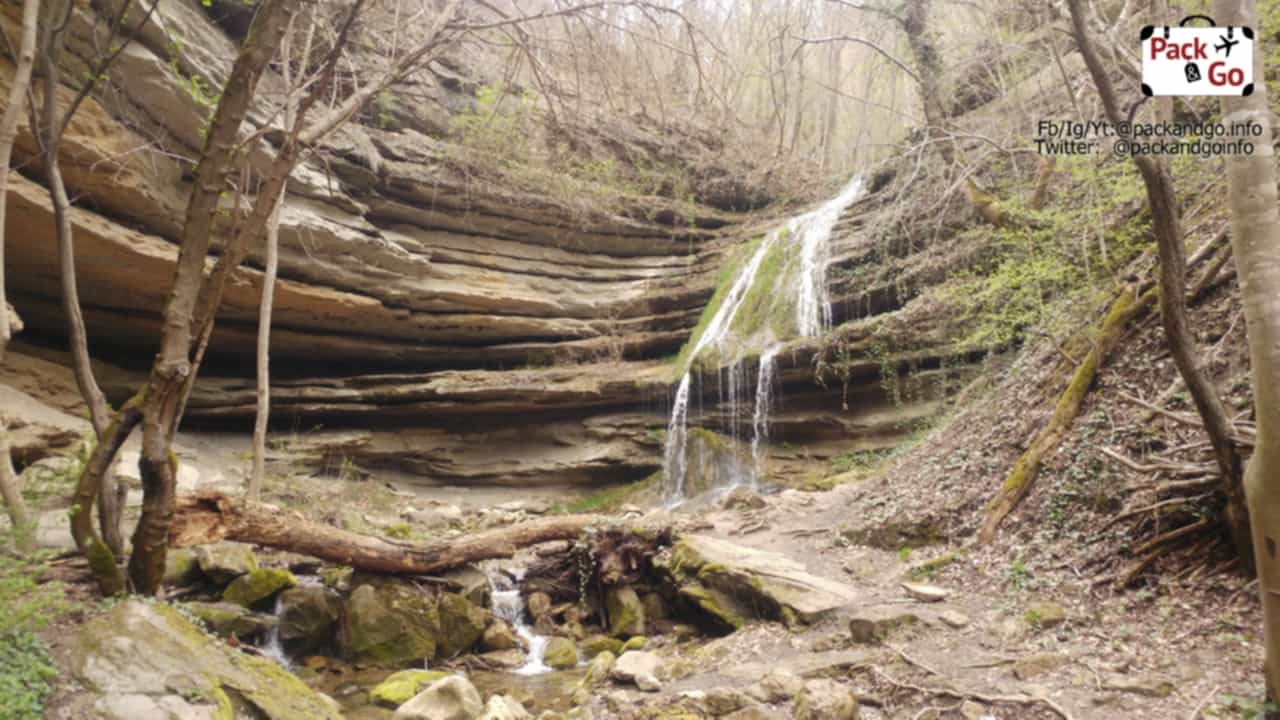
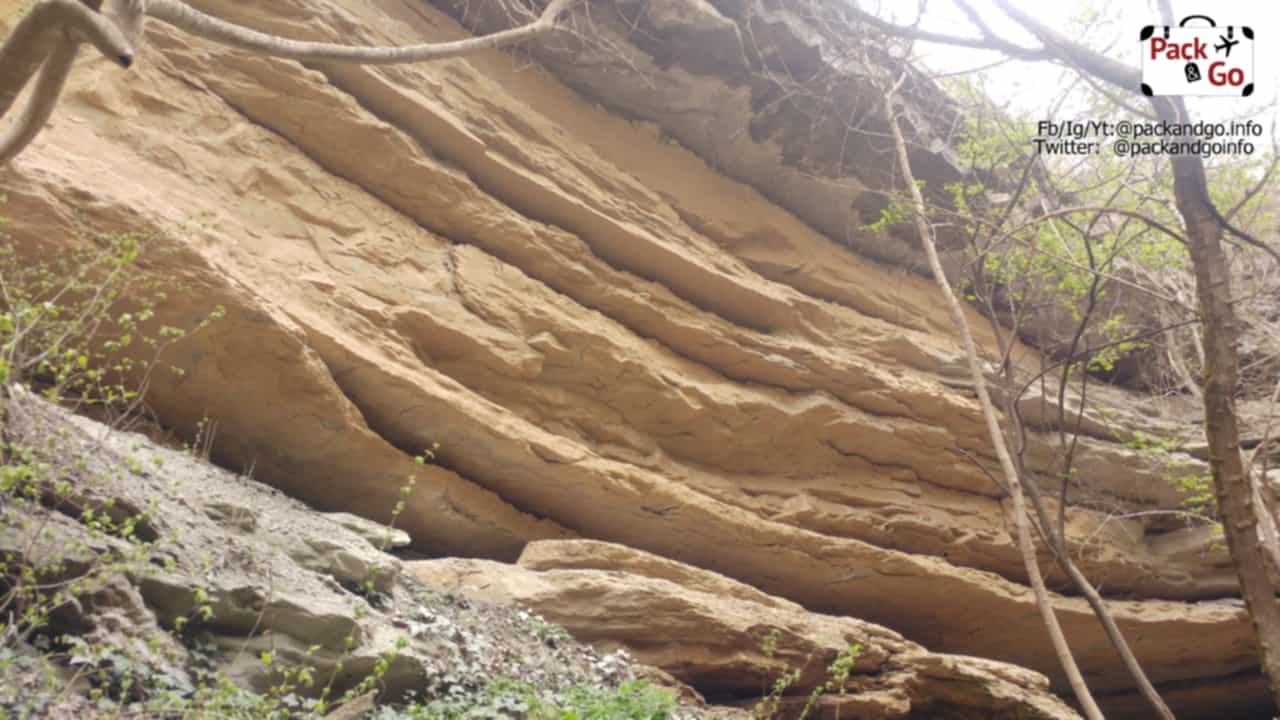
The trail is not hard and immerses you in a cool, natural place. When we arrived, the current in the channel was strong. We walked along with it, passing through a camping site, BBQ area, and spaces designed for kids and adults to have fun in nature.

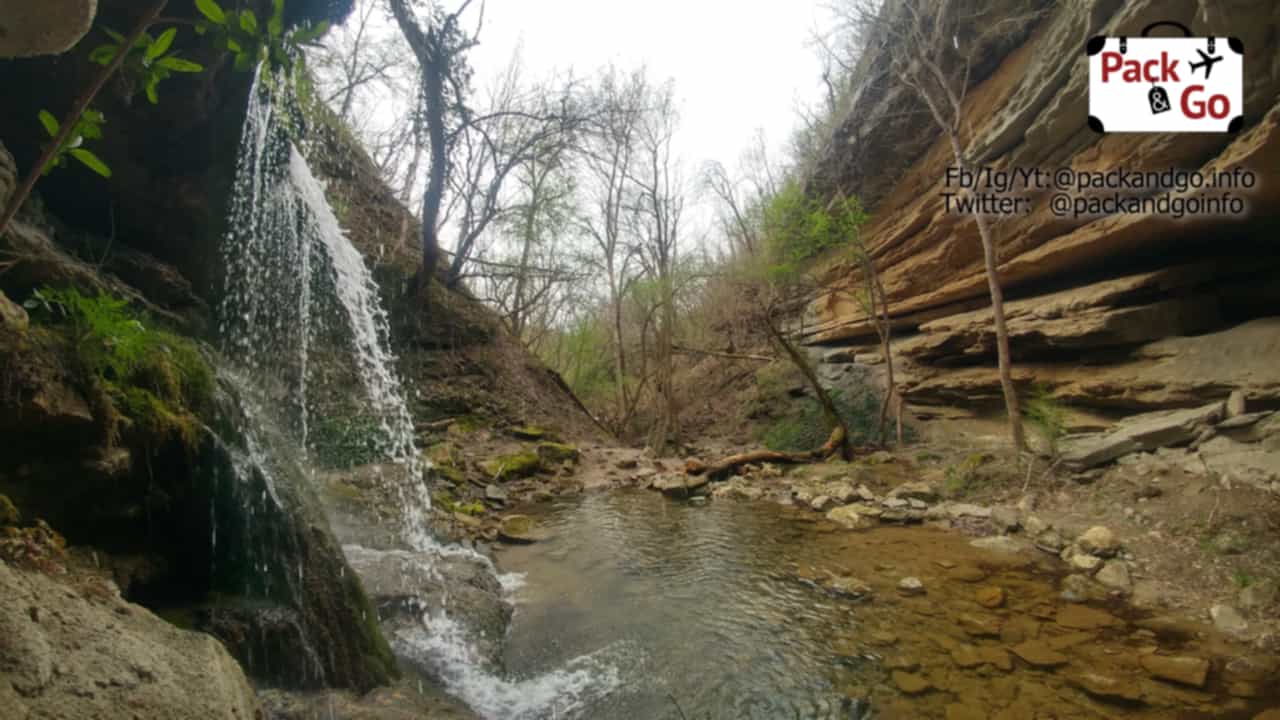
Soon, we were in front of the waterfall. It was not the highest, but it was pretty and the surroundings were quiet and enjoyable. The place is ideal for spending a day alone, with friends, or with family. When we arrived it was empty so it was easy to park exactly at the entrance. But the space does not look for many cars to park. Maybe during the high season, you should look for another parking spot.
2. Hotnitsa waterfall (Хотнишки водопад (Кая Бунар)), 20km away
The clue we got was that the waterfall was close to Hotnitsa village. So we drove directly to this village and yes, from there it’s easy to reach the waterfall. We parked a bit after the waterfall because there is a small parking lot. You can leave your car safer there and then walk. It’s not a long distance. So we did and soon we were walking on a well-marked road heading to the waterfall. We were just a few meters from the highway, but everything got different here. Nature is all over! We love nature so we were in the right place. We kept going and suddenly, we saw it! Hotnitsa waterfall is very beautiful! Our eyes were amazed by the emerald color of the water. Someone told us it may be produced by limestone deposits in the rocks. Well, what we can say for sure is that it’s a beautiful waterfall!

It’s 30 meters in height and if you visit it in the right season (Spring or the beginning of Summer), you will see, like we did, a great and strong waterfall. It’s fed by the Bohot river. The trail is not very challenging. It’s something like a kilometer and a half. Walking there is a very relaxing experience. You can enjoy the views and surroundings.
Don’t be confused, the waterfall is also called Kaya Bunar (spring in the rock) and it’s 20 kilometers north of Veliko Tarnovo. We have to say that the signs are written in Bulgarian. But still, is not hard to find the place.
3. Kartala waterfalls (Карталските водопади), 6.2km
The Kartala waterfalls are maybe the easiest to visit if you are staying in Veliko Tarnovo. They are just 6km away from it! So close, that you can go by walking from Veliko Tarnovo to Kartala waterfalls in less than 2 hours. What is so great about visiting these waterfalls is that you will be able to enjoy many beautiful views of Veliko Tarnovo on the way. You can see the Tsarevets fortress, which is a magnificent memory of medieval Bulgaria.
The old name of the main waterfall from the Kartala waterfalls is Kartal bayr, which, translated from Turkish, means Eagle Peak. We didn’t see any eagles, but you might have luck when you pass through there.
The trek is not very well marked, but at least it is very close, so you probably won’t get lost. You will see some marks on the trees, and occasionally some picnic spots, which will show you are on the right track.
The waterfall is around 8 meters high. It is not enormous, but it is a nice ending to the trek.
4. Momin Skok waterfall a.k.a. Emen waterfall (Водопадът „Момин скок“), 25km away
The Momin Skok waterfall is located near the Emen village and this is why many people know it as Emen waterfall.
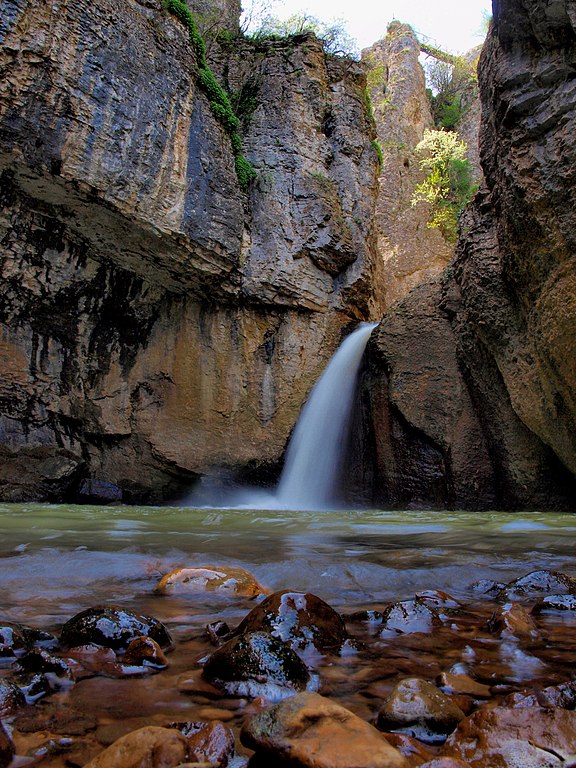
The name Momin Skok comes from a legend from the time of the Turkish occupation. The legend says that the Turkish military was collecting all the young women from the Bulgarian villages and bringing them to the harem of the sultan. The women from Emen didn’t want to join the harem, and they ran out of the village. The Turks were just behind them when they arrived at the waterfall. In a desperate move, they decided that they would rather jump and die than let the Turks catch them. They jumped and died together. This is why it is called Momin Skok. Momim means girls’, and Skok means a jump.
The waterfall is at the end of a beautiful canyon called Emen Canyon. The trek starts with a small cave. Then you will enjoy 50-meter-high cliffs on the two sides of the Negovanka River. The place is really picturesque. Just watch out, because it is a bit high. Take proper trekking shoes.
We totally enjoyed the trek. In the end, you see the 10-meter-high Momin Skok waterfall. It lands in a wide pool, which, if it is warm enough, you can swim in. The place really invites you to jump into the water.
5. Pirineshki Dzhendem waterfall (Пиринешки Джендем водопад), 62 km away
Pirineshki Dzhendem! The name is super hard to say, but it is really worth visiting. Especially if you are already near the Zlaten waterfall. It is just a few kilometers away!
It was easy to park near the road and walk to the waterfall. It was a super short trek of fewer than 10 minutes.

We were surprised to see such a high waterfall. The Pirineshki Dzendem waterfall is 34 meters high! It is among the highest in North Bulgaria.
On the way back, we had a picnic in the so-called “bivak”, the place for rest at the beginning of the trail. It was really nice to visit Pirineshki Dzhendem and Zlaten waterfalls, one after the other. They were two very different waterfalls, both amazing!
Conclusion.
Guys, this is just the beginning of our trip, and it’s getting really interesting and fun. Follow us and enjoy our next stops. If you are on a holiday, have a safe travel. If you are still at home, just pack and go!
We started in Varna and these waterfalls were first on the list. We are now heading towards Dryanovo. Then Etar, then Lovech, and more interesting destinations in North Bulgaria and Romania, on the way to Budapest (Hungary). Join our trip here on packandgo.info
Follow us on:
| Follow PackAndGo.info at: | |
| YouTube | @packandgo. |
| @packandgo.info | |
| X | @packandgoinfo |
| Bluesky | @packandgo.bsky.social |
| @packandgo.info | |
| TikTok | @packandgo.info |
The Mexican sombrero is an experience everybody should try!
- Details
- Written by: Martin Pramatarov
- Hits: 5389
When I visited Mexico for the first time, I had a very exciting, maybe childish, objective. I really wanted to wear a real Mexican sombrero!
I have seen it everywhere! It’s a fun accessory that can appear in bars or costume parties. If you like sports and Mexicans are participating, it’s very easy to spot their supporters. No matter the size of the stadium or venue, Mexican sombreros can’t be unnoticed.

Once in Mexico, I could see different Mexican sombrero styles, from cheap ones to some really refined and expensive ones with handmade embroidery. I also discovered interesting facts about this popular accessory that I will share with you!
Share your travel experiences with us! Packandgo.info
| Follow PackAndGo.info at: | |
| YouTube | @packandgo. |
| @packandgo.info | |
| X | @packandgoinfo |
| Bluesky | @packandgo.bsky.social |
| @packandgo.info | |
| TikTok | @packandgo.info |
What is the origin of the hat?
This is very interesting because the hat seems not to have a specific origin. It was not a brilliant idea of someone, but a brilliant idea of different people around the world. Hat’s creation was motivated by a simple and clear reason: hot weather. People living in really hot places felt the need to protect their heads and faces to avoid insolation and sunburns.
It’s clear hats were created a long time ago. Some early hats were traced in Ancient Egypt, the Roman Empire, and the Middle Ages. And after time, it became a fashion and a popular accessory worldwide.

Is sombrero Mexican?
Yes, the sombrero is Mexican, at least what we know now as the Mexican sombrero. But historians mention there’s a direct Spanish influence on it. First of all, the origin of the name sombrero it’s absolutely Spanish. It comes from the Spanish word sombra (shade), and it started being used in the 15th century. It’s a fact, Spanish was not the native language in Mexico.
Talking about the hat, it’s documented that there was a wide-brim hat in Andalucía, Navarra, and Salamanca. In the first two regions, it seemed to be an accessory for wealthy landowners. And in Salamanca, it was part of the horse rider outfit. When Spanish conquerors arrived in Mexico, for sure the use of the sombrero also did.
An own Mexican sombrero was created in Central Mexico and used by Mestizo cowboys. And then, it spread around the rest of the country.
The exact origin of the Mexican hat has been the subject of debate. Some recognize it as a Mexican creation. Others attribute their origin directly to Spain, even though the differences between the mentioned Spanish hats and the Mexican hat are visible.

What is a Mexican sombrero?
Mexican sombrero is sombrero de “charro” - a big, sometimes even massive, circular hat. This sombrero type has become a Mexican symbol, part of the folklore and culture of the country.
Historically and nowadays, Mexicans have worn different types of hats. Mexico is a big country. The hat’s design (style) varies based on the part of the country where you are. Materials, short or high crowns, narrow or wider brims are different.
But when people say Mexican sombrero, usually they mean the traditional and popular sombrero de “charro”. This is exactly the kind of hat that Mexican cowboys, horse riders, and mariachis wear.
Charro in Mexico refers to horse riders or cowboys who traditionally worked with livestock in the “haciendas” or ranches. Their outfit became popular and easy to spot. Tight-fit pants, belt, short jacket or only “sarape”, vest, wide bow tie, boots, and sombrero (hat). Ornaments, quality materials, and colors on “charros” suits were different based on the “hacienda” they came from.
By the way, now I know that when the hat is massive, the reason is that you didn’t get the proper size. The size of the ideal sombrero for you is defined by the head measures and the height of the person who will wear it.

How is a Mexican sombrero (de charro)?
The Mexican sombrero or “charro” hat varies based on the geographical location you are in. In the North of Mexico, where you find some of the driest areas, sombrero’s materials are lighter, cooler, and the brim is wider. This changes if you are in wooded areas, and in the South, where humidity is higher.
Therefore, a sombrero can be made of palm, wheat straw, wool, leather, suede, or rabbit hair. Materials must be balanced to make the sombrero a solid piece that can stand on the user’s head. It’s a wide-brimmed hat, raised at the back. Its crown can be flat, but usually, it’s shaped with several creases, called “pedradas” in Spanish (frequently four) to provide resistance to the sombrero in case of an impact (mostly falls).
Ornaments are an important detail and usually vary based on personal taste. The most refined sombreros have embroidered designs. Flower figures are usually the most preferred design. Sombreros can have “toquillas”, ornaments placed around the cylinder that shapes the crown, mostly in the lower part. They can be made of chiffon, ribbon, etc. “Ribetes” are also included, narrow strips or trims (ribbon, lace, etc.) to reinforce and adorn the edge of the sombrero. They can be embroidered or openwork trims.

Why should I wear a Mexican sombrero?
You definitely should wear a Mexican sombrero to have fun! That was absolutely my case. It feels rare at the beginning, especially if you are not a regular hat user like me. But it totally gives an accent, a unique touch to your image.
Besides, you should wear a Mexican sombrero because of its benefits. Its wide brim protects you from the sun, wind, dust, and rain. Whether you walk or you ride, you can be protected while keeping your hands free! That’s better than holding an umbrella. It means protection for your head, a sort of helmet, in case of impact (stones, tree branches, or falls).
And if you have seen old Mexican movies, you know a sombrero can be very useful for different purposes.
- To stir up the fire of a bonfire.
- To collect water for drinking yourself or sharing it with your horse.
- To play and dodge a bull pretending you are a bullfighter.
- To use it as a shield in case of a fight or a knife attack. It will be a one-shot resource, but still, it can save you.
- To protect (cover) your identity.
- To kiss your loved one, avoiding prying eyes with the wide brim.
Charros seemed to be very creative in taking full advantage of their sombrero!
In any case, the Mexican sombrero is an experience everybody should try! Don’t miss it on your next trip to Mexico.
Share your pics and experience with us, packandgo.info.
| Follow PackAndGo.info at: | |
| YouTube | @packandgo. |
| @packandgo.info | |
| X | @packandgoinfo |
| Bluesky | @packandgo.bsky.social |
| @packandgo.info | |
| TikTok | @packandgo.info |
What to do before, during, and after an earthquake?
- Details
- Written by: Martin Pramatarov
- Hits: 4188
Hi guys, when I was living in Mexico City, I experienced two very strong earthquakes. I was totally unprepared, and I was really scared. The earthquakes I have felt in the past have been as a maximum of 6 on the Richter scale, so not really strong. But those two were, 8.1 and 7.1!
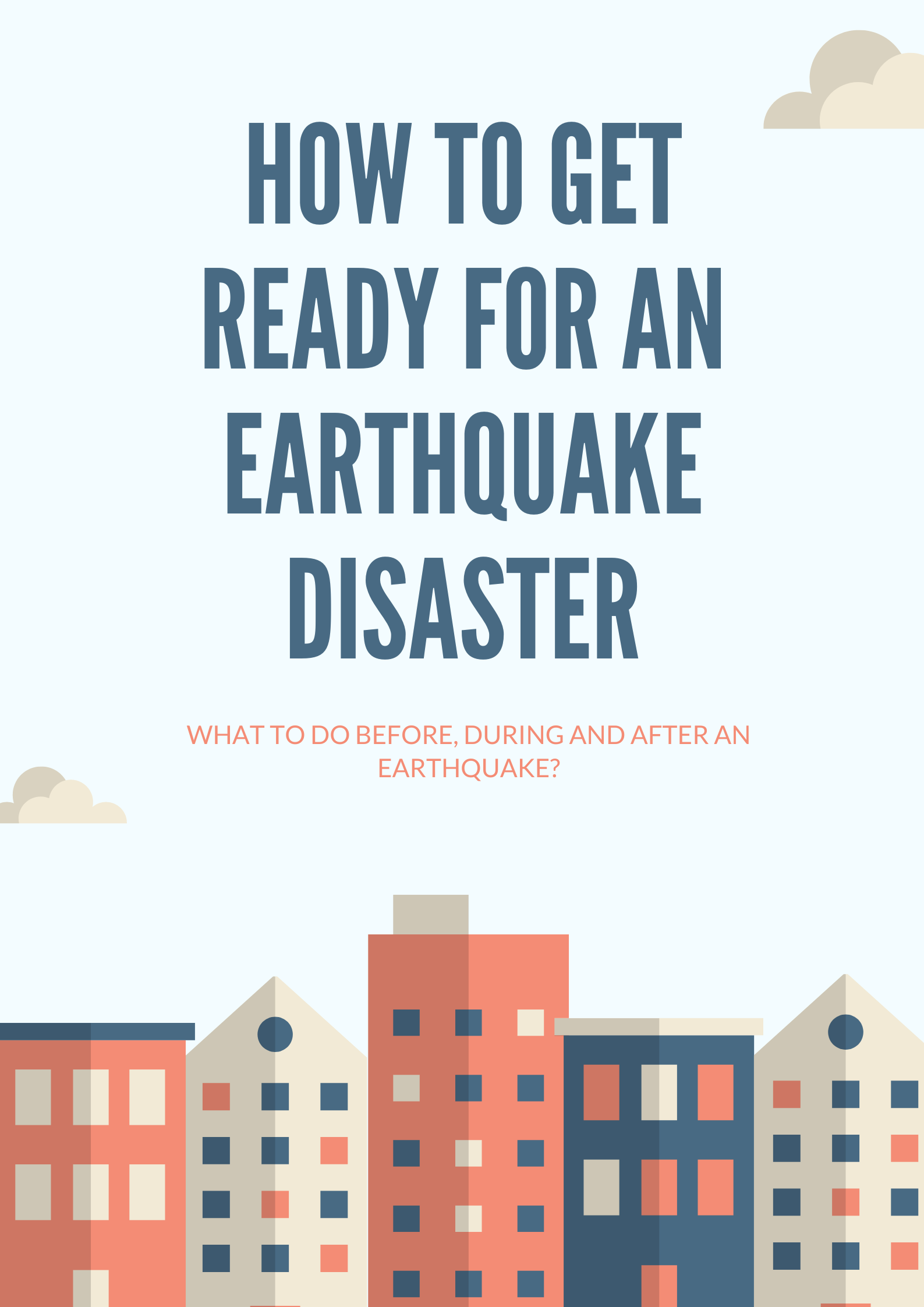
The first one hit us during the late night, around 11:40 pm. As usual, me and my girlfriend, we were watching TV, so it was easy to go out on the street and wait until it passes away.
The second was a different case. It hit us during the day, around 1 pm. I didn’t prepare after the first one. I didn’t check a thing, and again I got scared as hell. Trapped in the office environment and with the communication cut down due to overload. What should you do when an earthquake starts?
Finally, after this nightmare, I did my research, and I want to share with you the earthquake protocol “What to do during the earthquake”?

If you hear the earthquake alarm, don’t ignore it, follow these pieces of advice depending on your location.
What is an earthquake?
An earthquake is the shaking and vibration of the Earth’s surface. It is a natural disaster, that is related with releasing of a lot of energy that creates waves. The waves can cause a lot of damage.
What to do during an earthquake If you are inside a building?
Try to run out only if you can escape in 5 seconds or less.
If you are on a higher floor, just forget about this option and wait until the earthquake stops. Many of the injuries happen when people try to go out in a panic. Try to stay calm, as much as you can. It is scary, but you should not panic.
Get down, crawl and cover!
1. Get DOWN
Get down on the floor. Lower your body and you will be more stable. A standing person will suffer a lot more from the vibrations that the earthquake will produce.
2. Start CRAWLING
The best way to move during an earthquake is crawling. Moving close to the ground and use both your hands and legs. It is a lot easier to crawl during this natural disaster.
3. Search for COVER and HOLD ON
Search for something to cover yourself from falling objects. It should be something hard enough to protect you. A sturdy table or desktop is perfect. If there is nothing around, cover your face and get to any of the inside corners of the building.
Don’t stay close to windows, glasses, outside walls and doors, and anything that can fall on you.
Don’t go downstairs and don’t use the elevator! The stairs can easily break, you can get hurt, and the power can go down for a while. You won’t like, to be stuck in a small, dark box without knowing when the help will come. So, don’t use elevators during an earthquake.
4. Leave the building and take the most necessary stuff with you
Follow the instructions that are located on the wall of every building. Use the emergency exit route. There should be a picture on the wall, with clear signs on which doors should be used in case of disaster.
Take the most important items with you. If you have prepared an earthquake bag, with everything you could need, take it, if not go out with your most important items like documents, water, and some money.
Keep evading the elevators. There could be an aftershock, so better go down using the stairs, if they don’t have structural damages, or wait until professional firefighters come to help you.
5. Stay outside until the danger is gone
Stay outside for at least an hour. Be sure that no aftershocks are coming before you move to another place. During this time the communication might be problematic, so try to remain calm and send a message to your family or close friends when you can.
Inform yourself from the news, about the consequences of the earthquake and the current situation in the area where you are. You can get very important information.
What to do during an earthquake If you are outside?
1. Keep staying outside during an earthquake, obviously!
Don’t try to be a hero and rush to a nearby building, in an attempt to help people. You will help them by not blocking their exit route. The time to help will come after the ground stop moving and everything seems calm again.
2. Stay away from buildings, high structures, and electric poles
There is a big risk that they were damaged during the quake. You don’t want something to fall on you. The same goes if you are on foot, in a car, or in another vehicle.
Try to find an open field, like a park, where there can safely wait.
Do you like these earthquake tips? For more great content, follow us on:
| Follow PackAndGo.info at: | |
| YouTube | @packandgo. |
| @packandgo.info | |
| X | @packandgoinfo |
| Bluesky | @packandgo.bsky.social |
| @packandgo.info | |
| TikTok | @packandgo.info |
What to do after an earthquake?
1. Check yourself about injuries
Help yourself, or find somebody that can give you first aid. Bleeding could be a very big problem, so you need to stop the blood as fast as possible.
2. Stay away from the damaged buildings
If you were in one, now is the time to leave it. Stay outside, because there could always be secondary earthquakes. They can be lighter, but they can finish an already broken building.
3. Notify all your family and friend about your status
The first minutes are full of fear and chaos. Everybody will try to call his/her dear ones. The mobile network will probably go down, and it can take hours to get them back on. Use the data on your phone or any Wi-Fi Internet around. My latest experience showed me that Wi-Fi was the most reliable option.
Write in your social networks that you are ok and check on your people. Facebook offers a good option; you can mark yourself as “Safe” and check on certain people.
As I told you, a good connection could be hard to find, so write a short public message “I am safe.” If you use Mobile Data for the Internet, it will eventually post it when it gets a signal again.
*Optional
Help the rest of the people. Maybe you manage to get out of the natural disaster without being harmed, but others were not so lucky. Try to help them the way you can. If you know CPR and how to give first aid, you can really save lives during an earthquake.
If not, but you are strong, you can help with moving debris and cleaning the route for other people to escape from the building.
You can also help those that were left homeless. Bring them tents, and blankets and help them with information about the help they can get from the government.
You can even host some people at your place until they get a place to live.
You decide where and how you are willing to help. Me and my girlfriend, we went to help families in the next neighborhood, Roma (in Mexico City), and we brought food, boxes, and clothes.
We didn’t try to enter the broken building or move heavy stones, because we didn’t feel like we can help a lot in this, and it was risky.
What to do before an earthquake?
Prepare an earthquake emergency backpack. Keep there some ID that you usually don’t use, for example, your international passport. Put some cans of dried food and a bottle of water. A good addition could be a blanket. Don’t overfill it. The idea is that it is light enough that you can grab this emergency earthquake backpack and go in a hurry when you hear the early warning earthquake siren.
Pay attention to the earthquake drills. Take the earthquake drills seriously. If you are living in an earthquake zone, you will have an obligatory earthquake drill that will prepare you for such an event. Check where the emergency exits are, and how to move in case of a disaster.
Keep your home clutter-free. The quake can start when you are at home. Keep your home tidy. Fewer objects around mean fewer potential hits and obstacles to avoid during your exit. Also, you will need a clear escape room, so don’t be messy.
*Optional
Use an earthquake app. Many mobile applications can warn you about the upcoming earthquake. But, you need always to be connected to the internet, to use them. And also they might use your private data for their purposes. Better just pay attention to the earthquake warning siren in your area. If you hear it, start acting.
What country has the most earthquakes?
The single country, that has suffered the most earthquakes is China (according to Statista). The countries that suffer earthquakes often are:
-
China
-
Indonesia
-
Iran
-
Turkey
-
Japan
-
Peru
-
USA
-
Italy
-
Afghanistan
-
India
-
Greece
-
Mexico
| Follow PackAndGo.info at: | |
| YouTube | @packandgo. |
| @packandgo.info | |
| X | @packandgoinfo |
| Bluesky | @packandgo.bsky.social |
| @packandgo.info | |
| TikTok | @packandgo.info |
How is an earthquake caused?
The main cause of earthquakes is the sudden release of stress (energy) along faults in the earth’s crust. The earth has many tectonic plates and they are in movement. Their constant actions and interaction with each other cause build-ups of pressure. The pressure gets so high, that in one moment the energy needs to be released. That tectonic pressure, created from the move of the tectonic plates causes earthquakes.
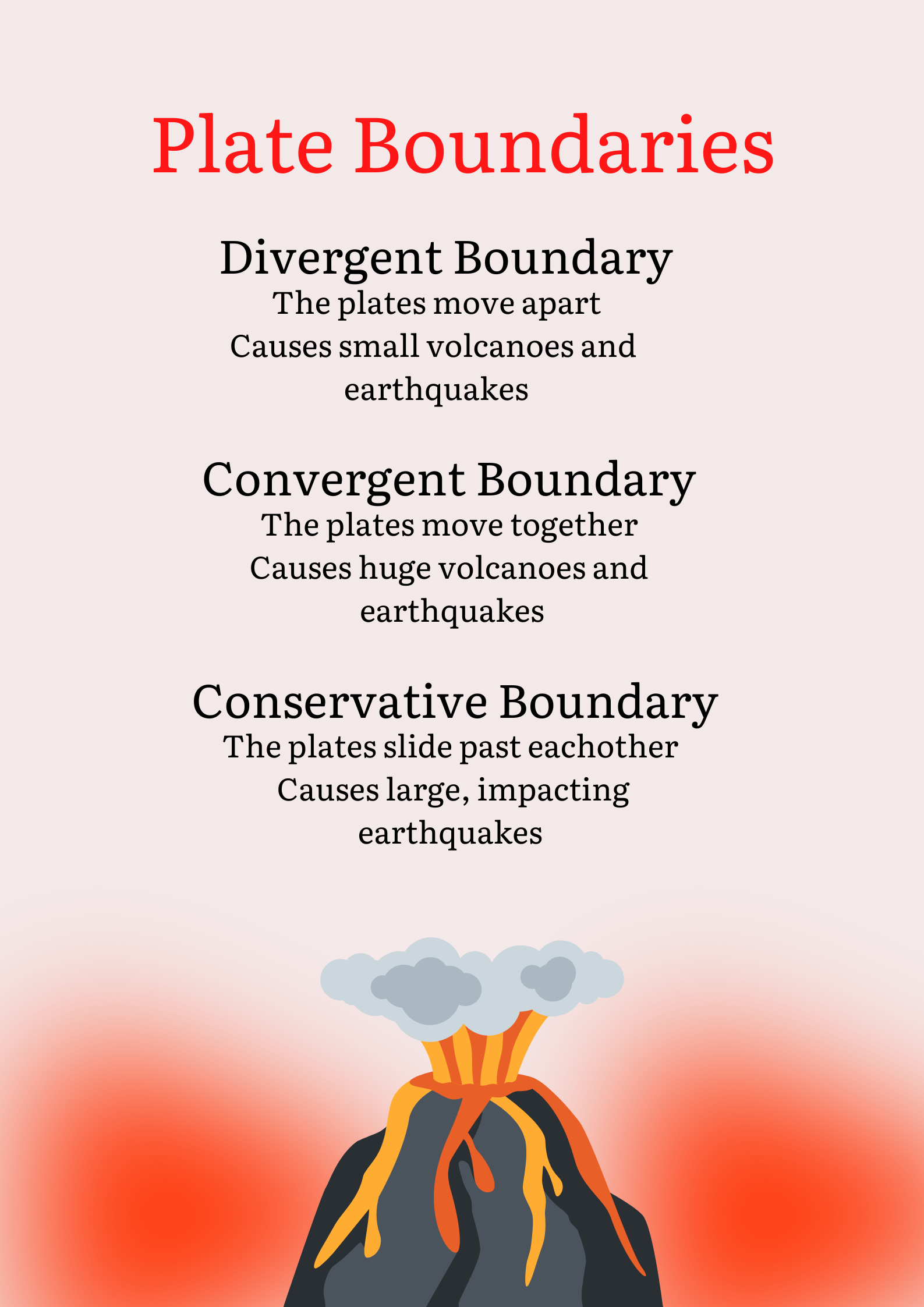
There are 3 main types of tectonic movements:
-
Trust fault (convergent). The Tectonic plates come together.
-
Normal Fault (divergent). The tectonic plates move apart.
-
Strike-Slip Fault (transform). The tectonic plates move past each other.
Can an earthquake cause a tsunami?
Yes, an earthquake can cause a tsunami (tidal wave). A large, strong, and shallow earthquake, with an epicenter on the ocean floor, can start a tsunami wave. There are regions where tectonic plates meet, and the movements they do doing the years cause such a disaster. A tsunami wave can travel as much as 1000 kilometers (the Great 1960 Chilean tsunami)! That temblor was 9.5 magnitude (Richter), and usually, it must be at least 7.5 magnitudes to cause serious damage.
Can an earthquake cause a volcanic eruption?
Yes, an earthquake can cause a volcanic eruption. A strong temblor, with a magnitude higher than 6 (Richter) can cause a volcano to erupt if the epicenter is close enough. This happens, if the volcano was already close to erupting anyway. If it had enough magma and sufficient pressure.
Can a volcanic eruption cause an earthquake?
Yes, a volcanic eruption can cause an earthquake. The pressure that volcanoes generate, together with the vibrations from the moving magma can affect the surrounding rocks and trigger a small earthquake. Such earthquakes are called volcanic earthquakes or volcanic tremors.
Can an earthquake be predicted?
No, people cannot predict earthquakes, no matter what technology they use. No device or equipment can predict a tremor. The only type of devices that scientists use currently is to measure it and warn. The earthquake waves move slower than the communication, so you can get an early warning. But it is based just on the distance, from the epicenter to the place where you are.
Conclusion
Earthquakes are unpredictable, even having applications for early warning, still, most probably you will get scared. Just try to remember those tips and stay couscous before, during, and after an earthquake. Like this, you will have better chances of survival.
Other articles that can help you with survival tips:
"Volcano, when the Hell breaks loose"
"Tsunami, the wave that you don’t want to see"
"Hurricane, what to do when it approaches?"
"Tornado, where and how to hide?"
"Avalanche, Surviving natural disasters"
Official sources used for this article:
https://www.ses.vic.gov.au/get-ready/quakesafe/what-to-do-in-an-earthquake
https://spaceplace.nasa.gov/earthquakes/en/
https://www.usgs.gov/faqs/can-earthquakes-trigger-volcanic-eruptions
https://www.usgs.gov/faqs/can-you-predict-earthquakes
https://www.statista.com/statistics/269648/number-of-earthquakes-by-country/
| Follow PackAndGo.info at: | |
| YouTube | @packandgo. |
| @packandgo.info | |
| X | @packandgoinfo |
| Bluesky | @packandgo.bsky.social |
| @packandgo.info | |
| TikTok | @packandgo.info |
Everything you need to know about the Mexican mariachi!
- Details
- Written by: Gianna Esquivel
- Hits: 3731
While traveling, one of the experiences we try not to miss is to listen to local music! It’s not about being an expert on the topic. It’s about letting local melodies get inside your head and move your body. As we have said before, music is an alternative way to travel too! Through it, you can know a bit more about the people of the country or city you visit.
In this sense, the mariachi is one of the most iconic elements of Mexican culture. The music itself, the suit of the singers, their popular “sombrero” (hat), and the instruments they play are internationally known.
If you are curious about mariachi or if you are planning to visit Mexico, here you have everything you need to know about Mexican mariachi!
| Follow PackAndGo.info at: | |
| YouTube | @packandgo. |
| @packandgo.info | |
| X | @packandgoinfo |
| Bluesky | @packandgo.bsky.social |
| @packandgo.info | |
| TikTok | @packandgo.info |
What’s mariachi?
Mariachi is a popular Mexican musical ensemble. In a mariachi, you can find stringed, wind instruments and vocals. Traditionally, these ensembles feature at least three musicians (guitar, guitarrón, and vihuela performers) dressed in “charro” suits. The mariachi is an important element of the Mexican tradition and identity. The word mariachi is also used to refer to every member of the musical ensemble. The performers are mariachis and the group they integrate is a mariachi.

Is mariachi a French word?
No, mariachi is not a French word. Mariachi is an indigenous Mexican word attributed to the already extinct Coca language. Coca people were an old indigenous group that settled in the region of the current Mexican states of Nayarit, Jalisco, and Colima. They lived in houses built with seashells. The ocean and the wind were their gods. They were also known because of their shaft tombs. One of the best-known Coca settlements was the one of Cocula, Jalisco in the 12th. century.
There’s a wrong version that stated, the word mariachi was the result of a misunderstanding or corruption of the French word “mariage” (wedding or marriage). These musicians used to be part of weddings’ entertainment. French people made the association between the occasion, “mariage”, and the presence of the musical group on it. And the gap created by the lack of a common language originated the confusion, so the musicians began to be called “mariache” or “mariachi”.
It’s been proved already that this version is a mistake. Historical documents show that the mariachi word and its use to refer to the Mexican musical ensemble existed so much before (at least from the 12th century) the French Intervention took place (the 1860s, 19th. century).
If you find similarity in the pronunciation of the French “mariage” and the Mexican mariachi, it’s just a phonetic coincidence.
Is mariachi Spanish or Mexican?
The mariachi is Mexican. However, its creation is the result of a mix of three influences: the indigenous Mexican, the African, and the European ones.
When the Spanish arrived in Mexico (1519), the Mexican indigenous had already developed their own musical instruments and traditions. European conquerors brought to the new continent their own music, just like the African slaves that travel with them. After a time, Mexican indigenous got interested in the foreign instruments and rhythms so they mastered them and incorporate them into their own music.
The mariachi was developed in a big Mexican region that included the current states of Sinaloa, Durango, Colima, Michoacán, Aguascalientes, Guanajuato, Zacatecas, Jalisco, Nayarit and Guerrero. Jalisco is frequently mentioned as the place of its origin. But historians don’t point out a single state as the mariachi birthplace, but a whole region.
If you want to know more interesting details about the origin of mariachi, check our article “Long live the amazing Mexican mariachi!”.
Is mariachi plural or singular?
Mariachi is singular. Mariachis, plural. Mariachi can refer to both, the musical ensemble and the musician that plays in it.
What instruments are used in a mariachi?
The instruments a mariachi uses to play, and the amount of them can vary between the different groups. This is defined mostly based on regional trends. Historically, the Mexican versions of the vihuela, the guitarrón, and “guitarra de golpe” have been pointed out as the backbone sound line of the mariachi.
But talking generally, the instruments that are used in a mariachi are the following.
- Mexican vihuela.
There’s a Spanish vihuela but don’t be confused, they are not the same instrument.
- Mexican guitarrón.
- Mexican “guitarra de golpe”.
With time, it has been replaced in many groups by the classical Spanish guitar.
- Violin.
- Trumpet.
- Vocals.
The vast repertoire of mariachi also includes instrumental music and versions.
- Harp.
To know more about mariachi’s instruments, you can read “Long live to the amazing Mexican mariachi!”.
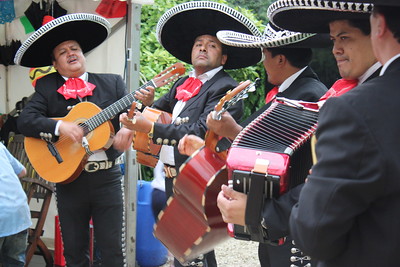
How many members does a mariachi have?
The minimum amount of members a mariachi has is three, to cover the base sound line (Mexican vihuela, guitarrón, and guitar). But there’s no limit up to integrating a mariachi. Currently, there are musical groups of six, eight, and even more than ten members.
Mariachi in Mexico has been constantly experimenting with the addition of instruments and more than one performer of the same instrument. To have more or fewer violins, more than one trumpet, flutes, accordion, etc. depends on the sound the ensemble wants to get. Some look for having a signature, something to be distinguished from other groups, emphasizing the presence of a certain instrument over others.
This totally defines the number of members mariachis have.
Who is the singer in a mariachi?
Mariachis usually don’t have a lead singer. Every member in the ensemble sings. Sometimes they sing all together during the complete song. Some songs demand a lead singer and the other mariachis only sing the chorus. The use of the voices is defined by the needs of the songs and by the musical creativity.
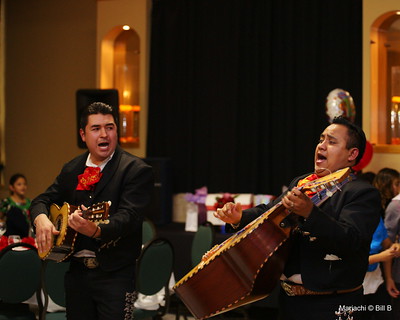
Can women be mariachis?
Of course, women can be mariachis. Historical documents show that already in 1903, there was a woman playing in a mariachi. Her name was Rosa Quirino. It doesn’t mean she was the only one, but maybe she is the only one who was documented at that time. Later, in 1948, an all-female mariachi ensemble was created in Mexico City, “Las Adelitas”. Its director seemed to get this idea after he saw a tropical orchestra integrated completely by women in Cuba.
What historians explain is that the context in which mariachi groups used to play were mostly rural areas and celebrations where alcohol was a constant. Some musicians were traveling from town to town for work. And such an environment, especially in the 19th century was considered not appropriate for women. That’s why mariachi grew up until a certain historical point, more like a musical tradition for men.
Currently, it’s not hard to find all-female mariachis with great musical quality!
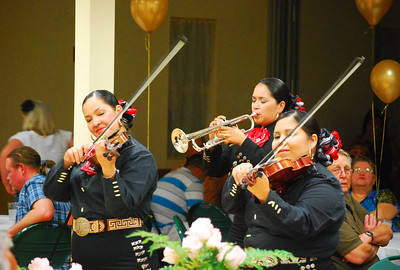
What do mariachis wear?
Currenty, mariachis wear “charro” suit. The tightly-fitting and ornamented pants, the embroidered belt, the short jacket, vest, wide bow tie, boots, and the popular wide brim “sombrero” (hat). For women, instead of the pants, they wear a full-length skirt.
Originally, mariachis used to wear peasant garb and palm hats. This clothing was aligned with their main activity. At that time, it was not exactly a uniform for playing music.
With time, mariachis were gaining popularity and recognition as a national symbol. In this process, clothing became important and it evolved. Especially during the Mexican Revolution (1910-1920), the idea for all the performers to use a uniform arose. Mariachi’s uniforms varied based on the region and budget.
With the 20th. century, the “charro” suit got into the scene. Due to its success, it became the official mariachi uniform.

You can also be interested in "The Mexican sombrero is an experience everybody should try".
What is a charro in Mexico?
In Mexico, “charro” is a horse rider or cowboy. They used to work in haciendas or ranches. In the 20th. century, their clothing style got popular. Tightly-fitting and ornamented pants, the embroidered belt, the short jacket or just a “sarape”, wide bow tie, boots, and the popular wide brim “sombrero”.
Depending on which hacienda the rider came from, suits varied in colors, shapes, and the material used to tailor them. So you could have humble and very expensive suits.
Currently, charros exist in Mexico but they don’t use this iconic clothing on a daily basis. This specific suit still can be seen in exhibitions and in “Charrería” events.
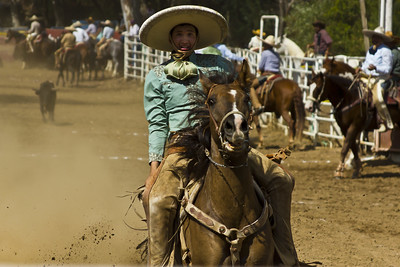
What is Charrería in Mexico?
“Charrería” is a Mexican sport that mixes equestrian activities with livestock traditions used in the haciendas of the old Mexican times.
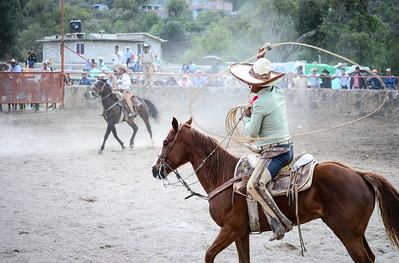
What is the difference between a charro and a mariachi?
In Mexico, a “charro” is a horse rider, a cowboy, or someone who works with livestock in a ranch or hacienda. A “charro” can also be a person involved in “Charrería” (Mexican sport). While a mariachi is a Mexican musician who plays and sings in the traditional ensemble called mariachi too.
The differences in their suits come basically from the purpose they use them. “Charros” need lighter suits to execute the physical challenges the “Charrería” (sport) demands. While mariachis look for more flashy suits for their shows.
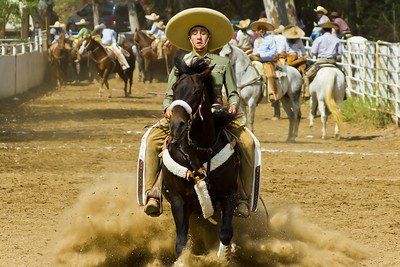
How much does a mariachi suit cost?
The “charro” style suit involves three pieces, the pants, the jacket, and the vest. Really cheap “charro” suits can cost around $90 (USD). A tailored one can start around $300 (USD). Differences in price are based on the quality of the fabric and the embroidery design. Humbler suit’s versions avoid the embroidery. The more ornaments you add, the more expensive the suit will be.
Don’t forget that the budget should include extra money for a shirt, the “sombrero”, a tie, a belt, the boots, and a “sarape” (optional).
There are very expensive “charro” suits. They can reach $17,000 (USD). Of course, they are made of elegant and high-quality fabrics, complex and handmade embroidery, additions like gold or silver buttons, and ornaments.
And don’t be confused. Here we talk about a real “charro” suit, not a costume. There are really cheap “charro” costumes, you can shop online for $30 USD and up.
How much does the mariachi outfit weigh?
A mariachi outfit can weigh up to 5 or 6 kilos. Remember that it is a work tool, so the preferred fabrics to make the suits are thick, for them to last longer. Besides, ornaments and buttons are made from metals, commonly alpaca (nickel silver). But the ones that use silver can go up to 10 kilos.
How long does it take to make a mariachi outfit?
Making a complete mariachi suit can take up to five days. Especially, if it involves designs from scratch and handmade embroidery.
On what occasions do mariachis play?
In Mexico, mariachis play in occasions like engagements, weddings, birthdays, baptisms, serenatas, religious and other holidays, and funerals. After all, their repertoire is vast and it includes all kinds of emotional songs (happy, angry, sad, slow, fast, etc. songs).
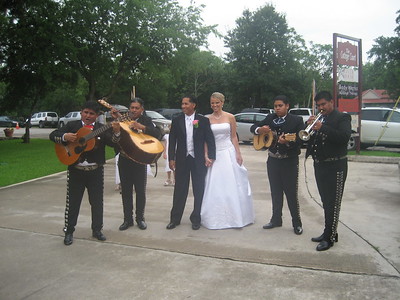
Where can I find mariachis in Mexico?
There are different choices. You can find mariachis in tourist spots like public plazas or downtown. Different Mexican restaurants and bars include a mariachi, as a part of their amenities. Public events during national or religious celebrations can be an opportunity to listen to mariachi. If you go to a birthday, wedding or even to a funeral, there could be a mariachi.
The different states of Mexico usually have a specific place to find mariachis, you should ask the locals. For instance, in the capital, Mexico City, there’s “Plaza Garibaldi” located in the historic downtown. It’s known as “the home of mariachi music”. Guadalajara has “Plaza de los Mariachis”, and so on.
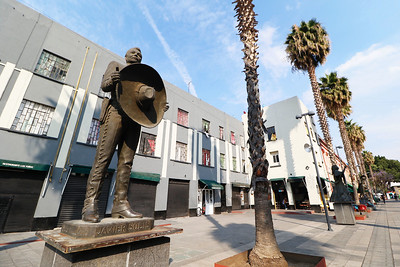
How much does a mariachi cost in Mexico?
Per every song you request to the mariachi, the price can go from $5 to $7 (USD). Usually is how mariachi charges you when the group is in a public place or passing by a restaurant, plaza, street, or bar.
Per hour or per serenata, a mariachi can cost from $97, to $145 (USD) and more.
The price depends on different factors. If the mariachi has to move to a specific address (serenata) or if they play on the place you found it. The number of songs. The number of mariachis (musicians) in the ensemble.
Usually, an hour of serenata means around 45 minutes of music. Based on the length of the songs, it can mean from 8 to 10 songs. A five-member mariachi can be enough for a good mariachi sound. If you are interested in having a specific instrument like trumpet, harp, or violin, you should check it. Not all groups use the same combination of instruments. You can always negotiate to get more songs, time, etc.
If you are lucky and find a mariachi playing in a public event, the experience can be zero cost for you. Or you can only give a tip to the musical group if you like it.
Always be sure about the cost. To directly assume that mariachi, like whatever other product or service, is for free can be an expensive mistake. If they get close to you for singing, if you feel like requesting them a specific song, ask first and very clearly the price and conditions.
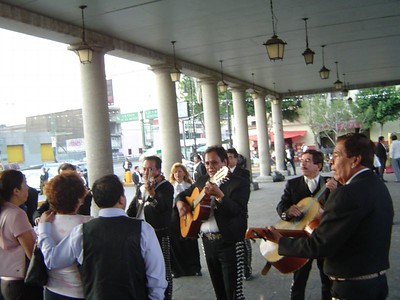
How much do you tip mariachis?
Some people recommend considering how many members the mariachi has to give the tip. Meaning, an amount that once divided, still can be something for every mariachi’s member. But frequently, they are six or more musicians. And honestly, you also have to consider your own budget. Especially in public events and restaurants, we saw people tipping from a couple of American dollars, 5 USD, 10 USD, 15 USD, and more (2020 reference).
There’s no standard amount to tip mariachi in Mexico. And the tip is mostly voluntary! If you don´t like the mariachi, you don’t have to tip.
Just be aware that some restaurants and bars include the mariachi for free (tip is optional). But some mariachis get into those places expecting a fee per every song they sing to you. Some places also establish a minimum amount for the tip. Always check this first. You have totally the right to know the conditions to get this entertainment. If you are ok with the required tip, go ahead. But if it looks not good for you, step back before you get involved in an uncomfortable situation.
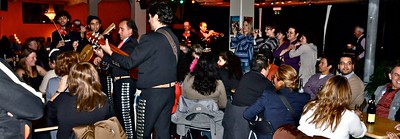
What topics does mariachi sing about?
Mariachi sings about all types of topics: love, birth, death, age, honor, national pride, life challenges, betrayal, breakup, jealousy, machismo, women, men, Politics, revolutionary heroes, freedom, poorness, richness, alcoholism, courage, hard-work, animals, country and city life. The mariachi explores all human emotions.
Why do mariachis shout in their songs?
“Gritos” or shouts in the Mexican musical context are frequently part of the way Mexicans celebrate. Mariachis shout in their songs to express pride, joy, or excitement.
Why do mariachis say “Viva Mexico”?
“Viva Mexico” means “long live Mexico”. Mariachis say the phrase to express they are proud of their country, identity, music, etc.
How does a mariachi sound?
Our opinion is, a mariachi sounds alive, powerful, loud, energetic, and emotional. Check by yourself. Here we have a small sample for you to taste it “Long live the amazing Mexican mariachi!”.
Is all Mexican music mariachi?
Of course not all Mexican music is mariachi. That is another mistaken idea people get basically, from the movies. Exactly like to think that all Mexicans wear the wide brim “sombrero” on a daily basis.
The Regional Mexican Music genre is really wide it includes Ranchero (mariachi), Norteño, Jarocho, Banda, Corrido, Grupero, Duranguense, etc. Besides, you can find Pop, Rock, Nortec, Cumbia, etc.
Is ranchera the same as mariachi music?
No, ranchera is not the same as mariachi music. Ranchera music is a genre of traditional Mexican music. The word refers to music that originated in the ranches. Mariachi is a Mexican musical ensemble, not a musical genre. Due to the origin of both, the musical ranchero genre and the ensemble, they are very linked. Ranchero songs have been performed by mariachi for decades. But “rancheras” can be performed in all kinds of Mexican regional music styles. Just like mariachi can perform other genres, modern ones included. You can see some examples clicking here: “Long live the amazing Mexican mariachi!”.
What is the most requested mariachi song?
“Las Mañanitas” is so far the most requested mariachi song. It’s the Mexican equivalent of the American “Happy birthday”. This has total sense if you consider birthdays are a common occasion to celebrate and to have serenata. This song is the way to start it and to surprise the birthday girl or boy.
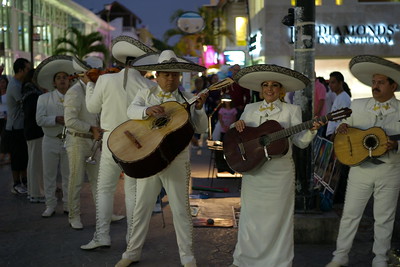
What songs should I request a mariachi?
There are many songs you can request a mariachi, but here you have our proposal:
- Mexico Lindo y Querido.
- El Son de la Negra.
- La Bikina.
- El Rey.
- Cielito Lindo.
- El Aventurero.
- Volver, Volver.
- La Cucaracha.
- 100 años.
- Cucurrucucú Paloma.
Top 3 mariachi songs.
This is absolutely our personal opinion, guys:
- El Aventurero.
It’s fun and it has a great, fast rhythm.
- Cielito Lindo.
The Mexican "war" song to support Mexicans in international competitions, like football ones. And it’s actually a positive and romantic song dedicated to a lady.
- La Bikina.
Mariachi sounds different, slower, less thunderous, more melodic.
What’s the difference between mariachi and banda music?
There’s a big difference between mariachi and banda music: instrumentation. Banda musical groups mainly use brass, winds, and percussions. A louder combination of instruments than the mariachi one. Mariachi is based on stringed instruments with the addition of a wind instrument, the trumpet. The different instrumentation used by banda and mariachi gives as a result a really different sound. Also, the vocals style is different. There’s no way to confuse them.
What is the most famous mariachi?
The most famous mariachi is the “Mariachi Vargas de Tecalitlán”. It was founded in 1898 by Gaspar Vargas in Tecalitlán, Jalisco. It’s the oldest Mexican mariachi ensemble and its popularity has reached the international level. They are still playing. The group has been a family business for many generations already.
Other famous mariachis:
- “Mariachi México de Pepe Villa”, founded in 1953 and still playing.
- “Mariachi Internacional de Guadalajara”, founded in 1989.
What is the most famous mariachi singer?
To point out only a name as the most famous mariachi singer is hard. When you ask Mexicans, they have a long list in mind. And they have at least two categories, old and contemporary most famous singers.
Old famous mariachi singers: Pedro Infante, Jorge Negrete, José Alfredo Jiménez (also composer).
Contemporary famous mariachi singers: Vicente Fernández, Alejandro Fernández, Pepe Aguilar, Pedro Fernández.
All of them have become internationally famous, due to a large amount of sold albums and sold-out arenas.
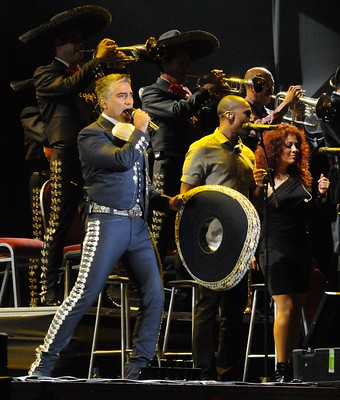
Who is the most famous female mariachi singer?
The most famous female mariachi singer in Mexico is Aída Cuevas.
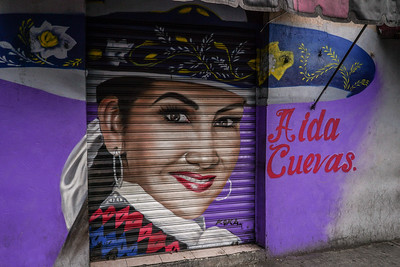
You can also be interested in "The Mexican sombrero is an experience everybody should try". Or "Long live the amazing Mexican mariachi!".
Join PackandGo.info !
| Follow PackAndGo.info at: | |
| YouTube | @packandgo. |
| @packandgo.info | |
| X | @packandgoinfo |
| Bluesky | @packandgo.bsky.social |
| @packandgo.info | |
| TikTok | @packandgo.info |
Page 1 of 6
